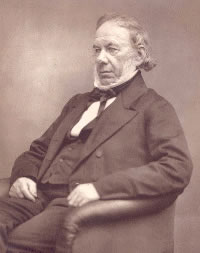John Mercer (scientist) facts for kids
Quick facts for kids
John Mercer
|
|
|---|---|

John Mercer (scientist)
|
|
| Born | 21 February 1791 Great Harwood, Lancashire, England
|
| Died | 30 November 1866 (aged 75) Great Harwood, Lancashire, England
|
| Occupation |
|
| Spouse(s) |
Mary Wolstenholme
(m. 1814) |
| Children | 6 |
John Mercer (born February 21, 1791 – died November 30, 1866) was a clever English scientist who worked with dyes and fabrics. He was born in a place called Great Harwood in Lancashire, England. In 1844, he invented a special way to treat cotton, called mercerisation. This process makes cotton fabrics much stronger, shinier, and better at holding dye.
Contents
Early Life and Discoveries
John Mercer had a very interesting start. He never went to a regular school! Instead, he learned how to read and write from a kind neighbor. He loved experimenting with dyes and colors from a young age.
Learning Chemistry
Mercer taught himself about the chemistry of dyes by reading textbooks. He was very dedicated to his studies. In 1817, he made an important discovery: he found a new orange color called Antimony orange. This was the first really good orange dye that could be used for printing patterns on cotton fabrics.
The Mercerisation Process
In 1844, John Mercer developed his most famous invention: the mercerisation process. This special treatment for cotton makes the fabric stronger, gives it a nice shine, and helps it absorb dyes better. Because of his amazing work, he was invited to join important scientific groups like the Royal Society, the Philosophical Society, and the Chemical Society.
Helping His Community
John Mercer wasn't just a scientist; he also cared about people's health.
Fighting Disease
He did important research on antimicrobials, which are things that stop tiny germs from spreading. In 1847, he helped prevent the spread of a serious illness called cholera in a town called Sykeside. He used a substance called chloride of lime, also known as "calcium hypochlorite." Today, this same chemical is used to clean swimming pools and make drinking water safe!
Family and Later Life
In 1814, John Mercer married Mary Wolstenholme, and they had six children together.
Community Involvement
After his wife passed away in 1859, Mercer continued to be active in his community. He became a justice of the peace in Lancashire, which meant he helped with local law and order. He also gave talks and supported local churches.
Legacy and Memorials
John Mercer passed away at his home in 1866 and was buried in St Bartholomew's Church, Great Harwood. To remember his contributions, his daughter Maria helped fund memorials. In 1903, a clock tower was built in Great Harwood in his honor, along with the Mercer Hall. His old cottage in Oakenshaw was even turned into a museum and park, so people could learn about his life and work.

